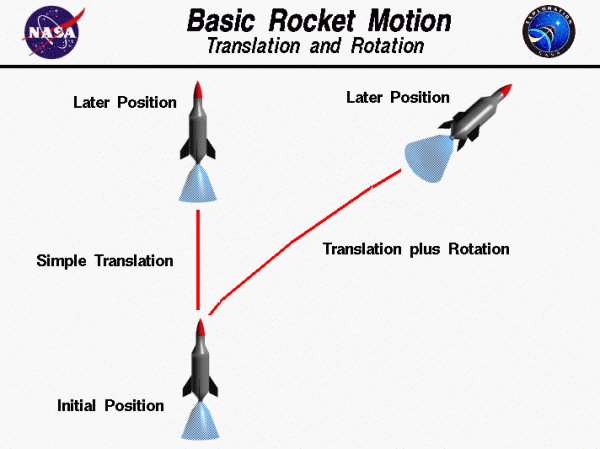Basic Rocket Motion
Dimensions
We live in a world that is defined by three spatial dimensions and one time dimension. Objects move within this domain in two ways. An object translates, or changes location, from one point to another. And an object rotates, or changes its attitude. In general, the motion of any object involves both translation and rotation. The translations are in direct response to external forces. The rotations are in direct response to external torques or moments (twisting forces).
Rotation and Translation of Rockets
The motion of a rocket is particularly complex because the rotations and translations are coupled together; a rotation affects the magnitude and direction of the forces which affect translations. To understand and describe the motion of a rocket, we usually try to break down the complex problem into a series of easier problems. We can, for instance, assume that the rocket translates from one point to another as if all the mass of the rocket were collected into a single point called the center of gravity. We can describe the motion of the center of gravity by using Newton’s laws of motion. In general, there are four forces acting on the rocket; the weight, thrust, drag and lift.

